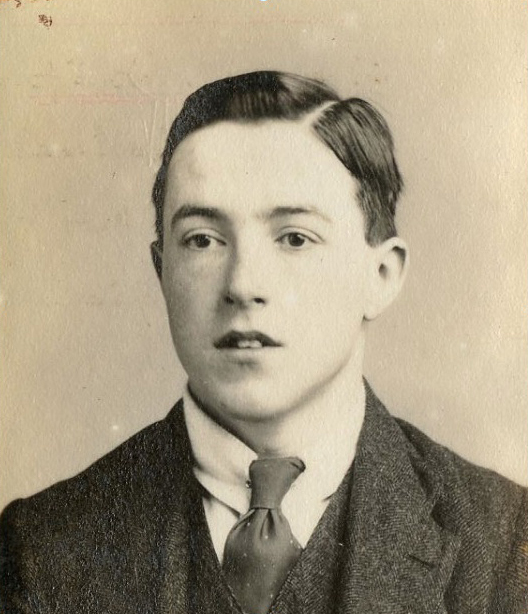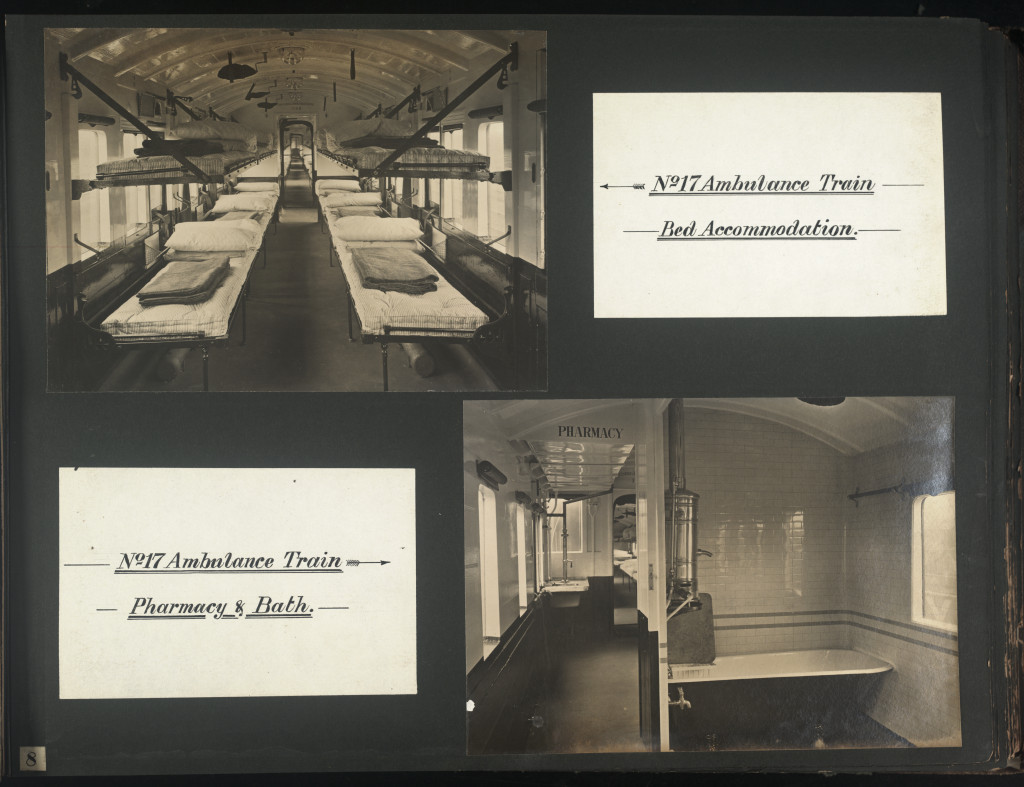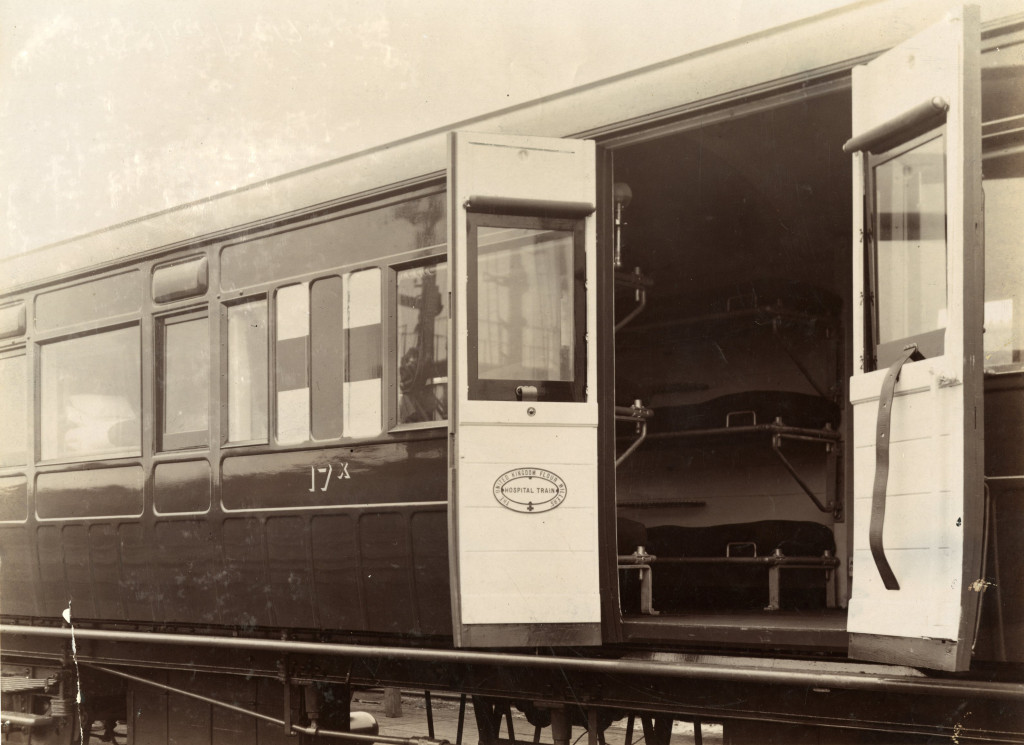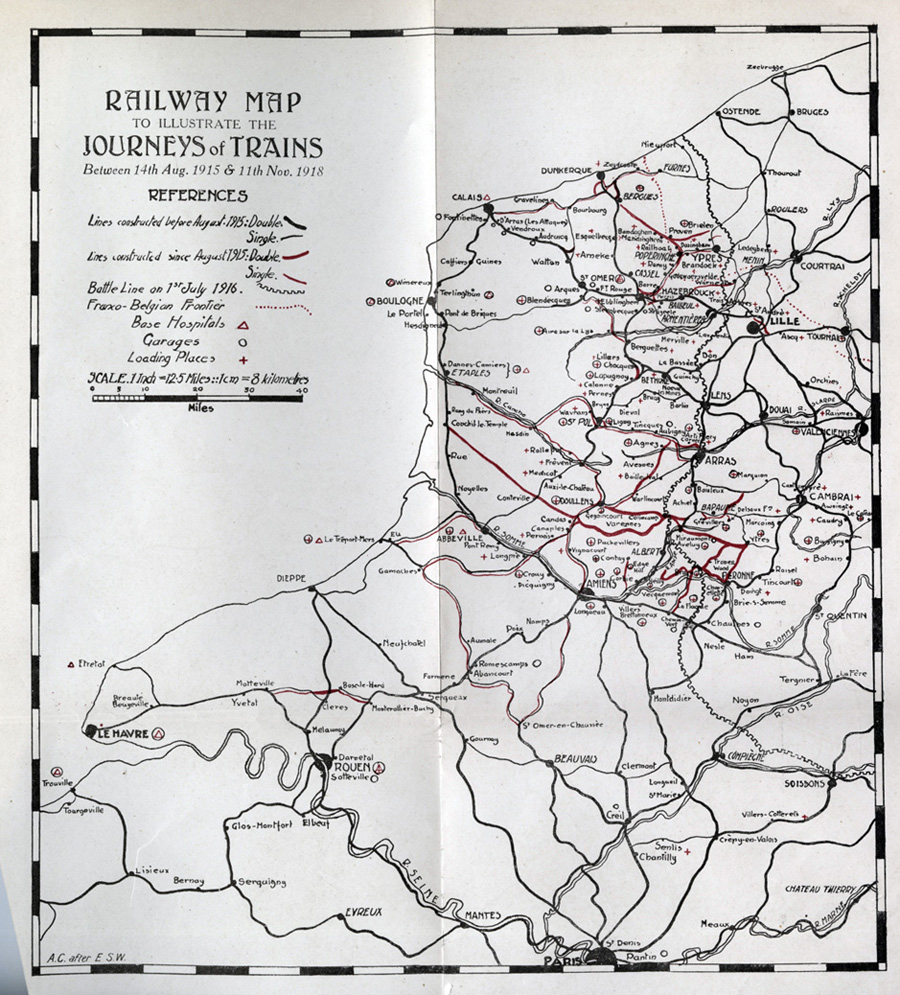In this guest post, author Karyn Burnham explores the story of a young medical orderly on the front line.
In August 1917, 19-year-old conscientious objector Charles Dingle joined the crew of Ambulance Train No 17 on the Western Front as a medical orderly. Charles was a quiet, thoughtful young man who had joined the Friends Ambulance Unit (FAU) the previous year as an alternative to military service. Little did he know that in the spring of 1918, he would bear witness to some of the fiercest fighting of the war … and tend to the most harrowing injuries imaginable.

When the war began in August 1914, Charles was 16 years old and a student in the engineering department of Hartley College (now Southampton University). Like most boys his age, he was caught up in the excitement of the war and thought he would enlist when the time came. Charles had been brought up by religious parents so, while at college, he regularly attended the Baptist Church in Southampton. Here, he began to question the legitimacy of war and came to the conclusion that the pursuit of war was incompatible with his Christian faith. His decision not to enlist enraged his father, who was serving in the Navy; the two argued bitterly and Charles was branded a coward and thrown out of his own home. The decision to join the FAU was a compromise that Charles was willing to make; the FAU were a non-military organisation and so were not part of the mechanism of war.
Charles was proud to serve aboard AT17 and recorded the details of the train in his diary. It comprised of sixteen Great Eastern coaches (including five ‘cot’ wards, five ‘sitting’ wards and five service coaches); the crew comprised three doctors, three nurses and forty-seven orderlies. Charles’s work on board involved changing dressings and carrying wounded soldiers into a carriage from the platform.

Generally, life on AT17 varied between long periods of waiting in railway sidings, punctuated by bursts of frenzied activity as they went to collect the wounded from Casualty Clearing Stations (CCS). The morning of 21 March 1918, however, was set to be different from every other time before – it was the first day of the brutal German Spring Offensive.
AT17 moved out of its sidings in Peronne to the sound of a tremendous bombardment. Seven miles later, they arrived in Tincourt with shells bursting around them and shrapnel raining down upon them. The crew helped evacuate the CCS, which needed to be moved further behind the lines. AT17 arrived in Rouen with their load of wounded at almost midnight.

The following morning, AT17 set off again towards the front lines and the town of Ham. They were stopped before reaching Ham at the nearby town of Nesle, where they were shunted into sidings to await further instructions.
Nesle station was in chaos. The platforms were packed with civilians – old men, women and children – being evacuated from the area. No-one knew for sure whether trains would make it through to take them to safety. Charles found the sight pitiful, and wondered how he would feel if it were his loved ones being so ruthlessly driven from their homes.
Before long, the reason for their delay became clear. Ham was already under direct shellfire and part of the track between Nesle and Ham had been destroyed.
AT17 finally got word that they were heading for Marchelepot instead. Ham was considered too dangerous and was being evacuated by motor ambulance where possible. As AT17 got underway however, it became clear to the crew that they were heading in the wrong direction – Ham. The train came to a halt with shells exploding around them; the engine driver was engaged in a heated discussion with the Ham Chief of Police who was gesticulating wildly.
The track just ahead of them had been obliterated. There was no option but for the engine to shunt the entire train back the way it had come. As they started, a shell exploded perilously close to the front of the engine, destroying the track. Charles guessed that whoever had aimed the shell had assumed AT17 was moving forwards; they had escaped by the narrowest of margins.

The crew of AT17 journeyed through utter devastation to arrive at Marchelepot at 2.30am on 23 March. Each CCS they had encountered along the way was in a state of panic; under fire, unable to cope with the huge influx of wounded, and almost in the hands of the enemy. It was impossible to remove all the patients, so some volunteers stayed with the worst cases and waited to be captured by the advancing Germans.
From Marchelepot, AT17 headed back to the Front but were held up for nine hours near Amiens due to a smash on the line. Arriving at a CCS near Albert, the crew found the roads jammed with hundreds of wounded men walking back from the lines, and fresh troops and vehicles heading towards them. Two other ATs were also loading the wounded as well as ordinary troop trains, but still there was not enough room for everyone.
It was the worst loading Charles had ever encountered. Some men were so seriously injured that they wouldn’t normally have been moved. The German advance in this area was so rapid that Charles feared AT17 could fall into enemy hands as it made its slow and vulnerable journey towards Rouen. During the night, ten men died; by the end of the next day, there were twenty corpses on board. The combined stench of gangrenous wounds and corpses made the atmosphere almost unbearable. To make matters worse, AT17 was averaging just 600yds an hour.
AT17 arrived in Amiens on the morning of 26 March; the death toll had risen to twenty-three. Six hours later, they reached Rouen and another two men had died. It had taken fifty hours to travel ninety miles with an average of one death per two hours.
Charles Dingle remained with AT17 until February 1919, travelling through Belgium and into Germany to collect and repatriate wounded men. No other experience came close to those few days of March 1918.
The NRM exhibition Ambulance Trains is now open. Click here for information.
Book your place on one of our ambulance train talks here.
You can find out more about Charles in Karyn’s The Courage of Cowards: The untold stories of First World War Conscientious Objectors.
Great article, do any of these coaches exist in preservation?
Thanks
Hello. I am pretty sure this is my great uncle Charles. He spent a lot of his married life in Salisbury with Queen his wife. He ended up moving to a quaker home in Dorset. Would this be him?
Hi Kate,
Yes you’re right. His wife was Queen or Florence. I am his Granddaughter, Sally. My mother is their eldest daughter, Celia (still with us at 93). I think we may have met at Celia and Martin’s house in Bradford on Avon.
Its almost a year since you left your message! I wonder if anyone else replied to you.
Hi Sally
I am Yvonne, Elizabeth Perry’s daughter. Would love to make contact with you with Mum. Have been reading up about Uncle Charles. So interesting. We never knew all this. Look forward to hearing from you,
Hello Sally, I am Elizabeth Perry (nee Dingle)’s daughter Yvonne from NZ. I have just read Karyn Burnham’s book, as I was so surprised to see Uncle Charles’ name in the index. Mum is so thrilled to have this information as she had no idea Uncle Charles was on the trains. She thought he was on vehicle ambulances. What an amazing story. I now need to research more, and I am astounded to dind this internet page! Wow. I will show this to Mum. How is Aunty Celia? Did Martinand Celia give over U. Charles’ diaries for thks work? We have copies of his family diary but not his war experiences. Amazing. Iwe have wonderful memories of Uncle’s visit to us in Christchurch back in 1980!
I’m not sure when these messages were left but I’m also Charles’ great niece I am related via his wife Florence.
Judith Smith 11/11/2021
Some wonderful information and background. My paternal grandfather was evacuated wounded on no17 train 22-8-1918 after 2 years driving an ambulance himself
Hi Karyn (Burnham),
Such an interesting article. It’s very relevant to me at the moment because I am writing a short bio of William Farley Rutter who spent some time on AT17 as a Quaker helper. The bio is for our local History Society magazine in Shaftesbury Dorset, where he was a founding member of the society in 1946. Would you allow me to use info and pictures for my article?
Yours,
Rupert Tapper
Hi Rupert – I’ve only just found these comments! Unfortunately, I don’t receive notifications. This is probably far too late for you now, but I wouldn’t have been able to grant permission to use the pictures. I too had to obtain permission, particularly to use the image of Charles and that was limited to specific use.
I object to the comment that Charles was ‘thrown out’ of his home in Southampton; not true; as Friends Meeting House Euston has all the records of Friends and Charles was most certainly living with his Mother in Hill Lane Southampton at the time.. My family & I knew Charles & his lovely wife Florence well in the late 60s & 70s as we were all members of Salisbury Meeting. Their memory is honoured by having our library in the present Salisbury Meeting House named after them.
I’ve only just found these comments – I don’t receive notifications unfortunately. To clarify the comment about Charles being ‘thrown out’ of his home. I researched his story using his own handwritten account. His father did indeed throw him out of the house. However, when his father was away at sea, his mother took him back in. He had to leave each time his father was home. Hope that clears things up!